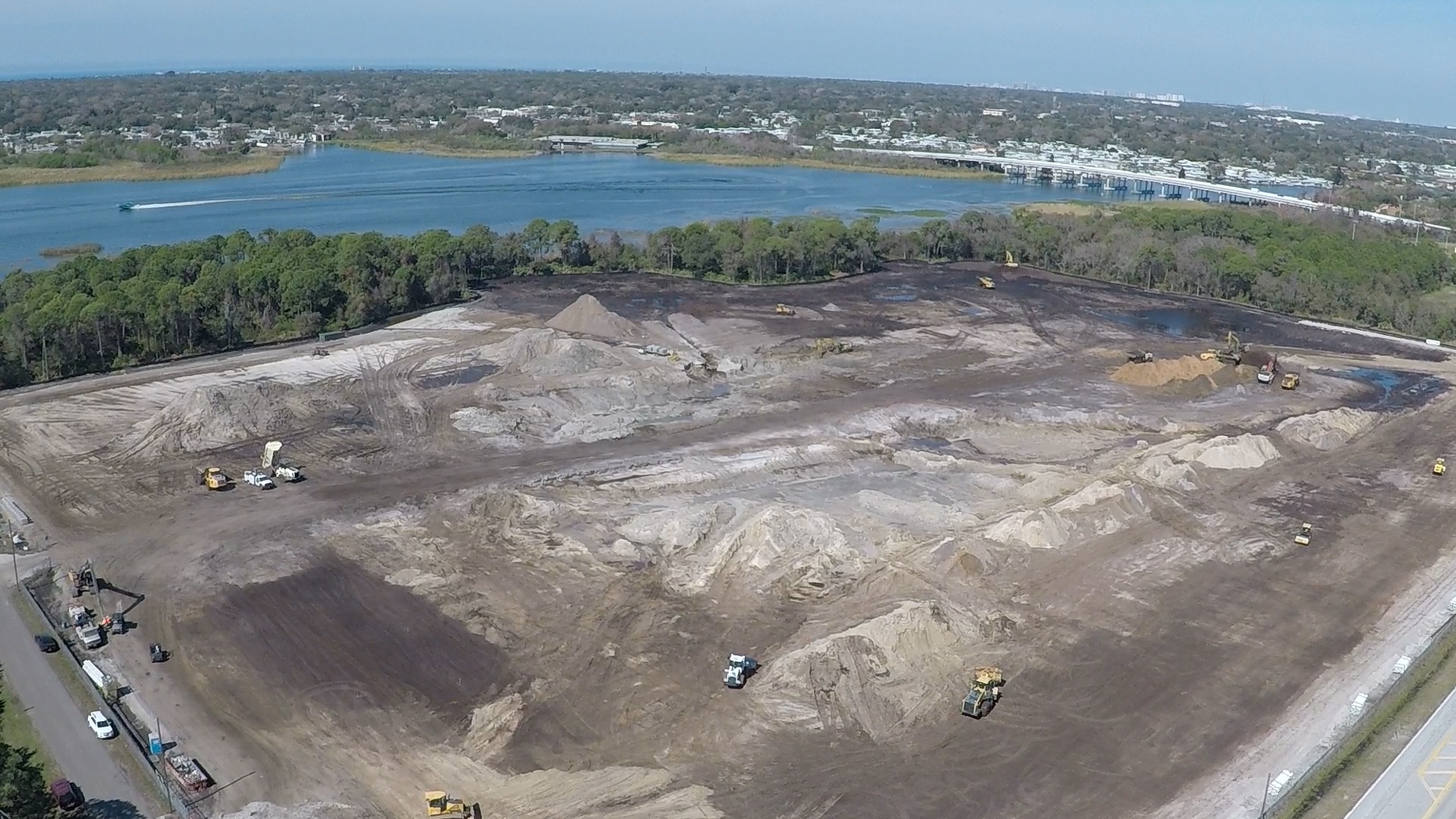On November 19, 2018, Gator Dredging started construction on a four-year $18 million lake restoration project for Pinellas County’s Lake Seminole in Florida. The project is removing approximately 900,000 cubic yards of sediment from the lake.
Lake Seminole, the second largest lake located in Pinellas County, was created in the late 1940s by damming off the estuaries of Long Bayou fed by the tidal flows of Boca Ciega Bay. The lake has seen organic sediment accumulate, which is causing degraded water quality and making cleaning necessary to restore the health of the lake.
The material will be hydraulically dredged with an Ellicott 670 14-inch swinging cutterhead dredge. At the longest length, the sediment will be pumped through 11,000 feet of temporary pipeline to shore where the material will be dewatered and disposed.
Gator Dredging headquartered in Clearwater, Florida, will make improvements to the 684-acre lake, by building a 27-acre dredged material management area disposal cell, where the 900,000 cubic yards of nutrient-rich organic sediment will be placed. The construction of the dredged material placement site is expected to take approximately nine months with completion slated for August 2019. Once completed the hydraulic dredging will begin in the North Lobe of the lake progressing south to the Park Blvd. vicinity. The dredging is expected to take 18 months to complete around February 2021.
Gator Dredging said the Pinellas County Commissioners top priority for this project is to improve the water quality of Lake Seminole as well as the surrounding wetlands. The nutrients removed from the lake are significant as they relate to the water quality of Boca Ciega Bay where the lake outfalls. The nutrients to be removed contribute to algae growth, including algae found in red tide. The algae growth depletes the resources needed to maintain healthy populations of aquatic life and in turn, this negatively impacts the surrounding environment.
Red tide serves as an example of what nutrient-enriched sediment can lead to. Red tide is fueled by nutrient-enriched sediments containing high levels of phosphorus and nitrogen. Removing the nutrients that algae need to thrive, will help reduce the environmental and economic impacts harmful algae blooms have on the Tampa Bay area. The result of removing these nutrients will be improved water quality and in turn, a healthier environment for the surrounding ecosystem, improving the lake’s aquatic life and the wildlife surrounding Lake Seminole.
Together with the Southwest Florida Water Management District and Florida Department of Environmental Protection, funding for the project has been approved and a contract awarded.
Since the start of this project, Gator Dredging has increased its workforce through the creation of 20 plus positions with the potential for more as the project progresses.




